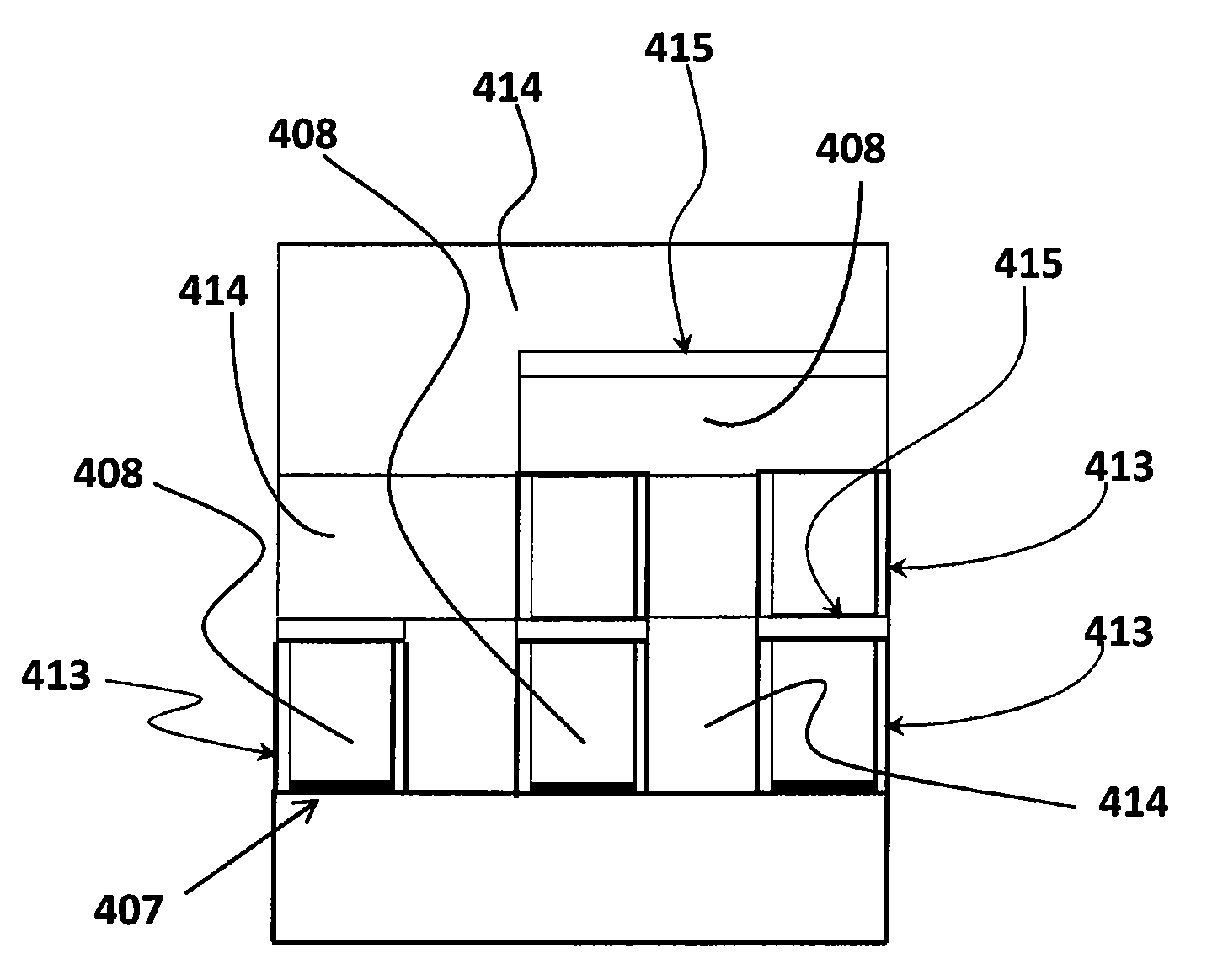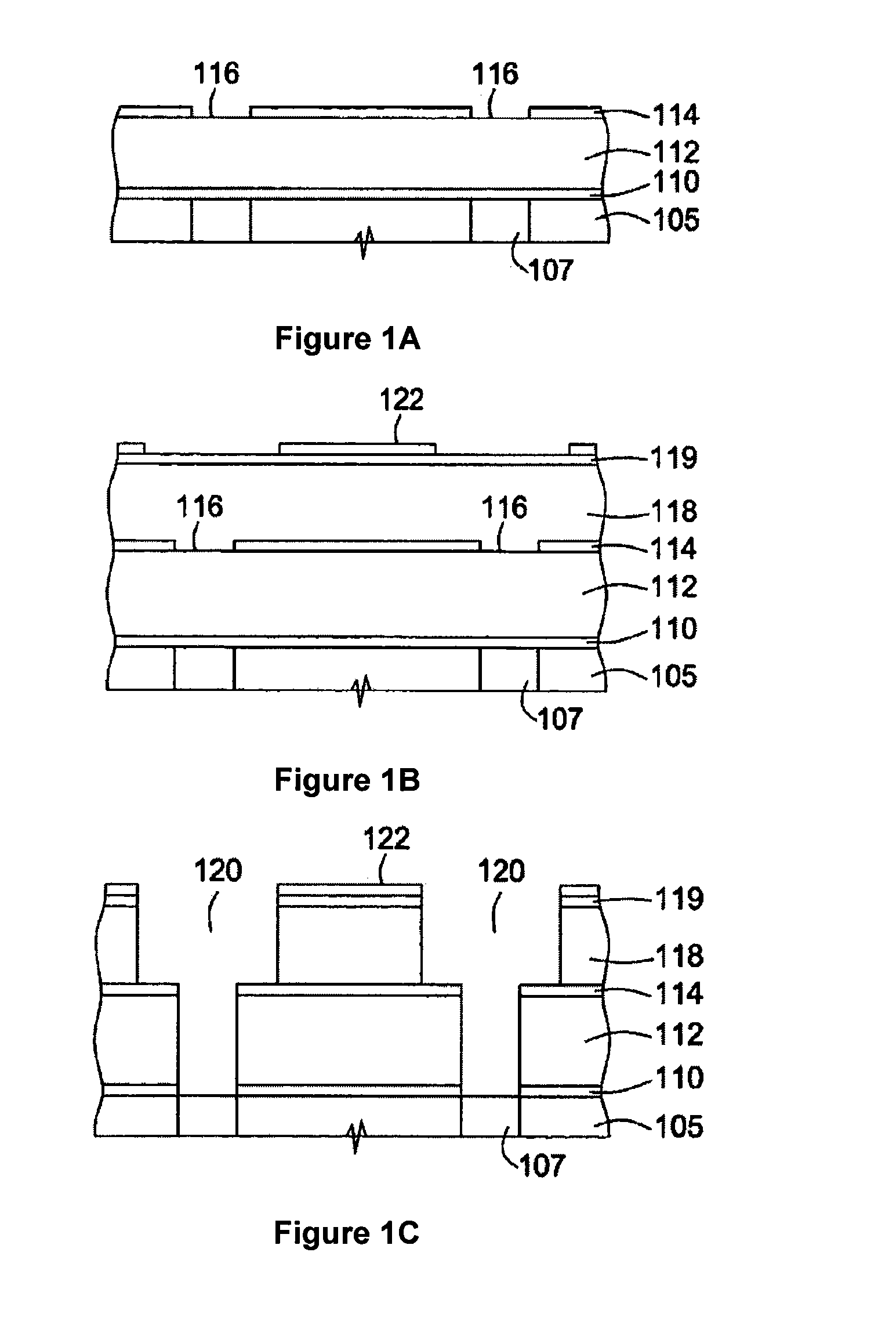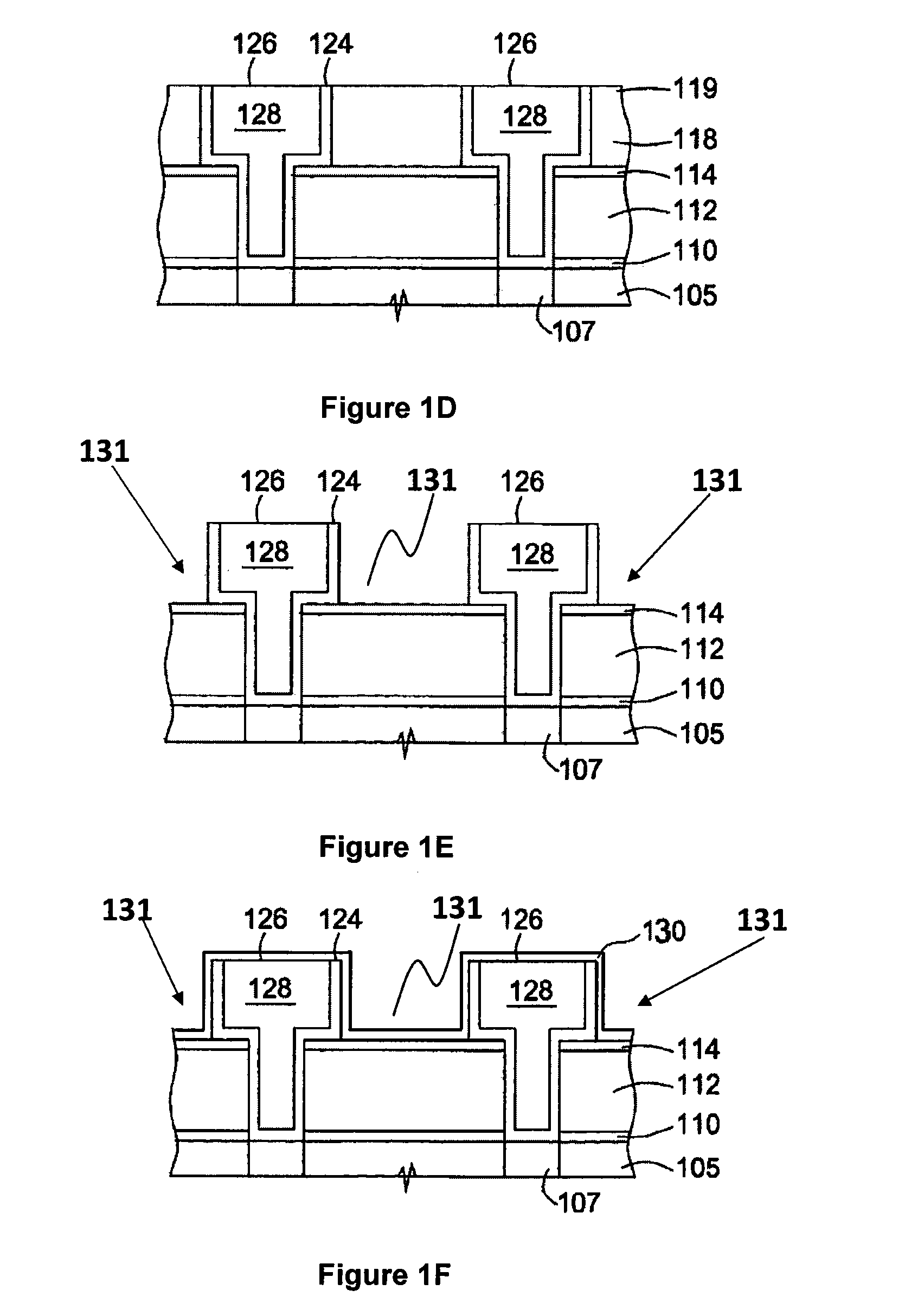Process for damascene structure with reduced low-k damage
a damascene and low-k-damage technology, applied in the field of damascene structure processing, can solve the problems of complex integrated circuits, degrade the overall performance of integrated circuits, and delay in capacitance (rc), so as to prevent copper migration into surrounding layers, improve electrical properties of circuit devices, and enhance copper passivation
- Summary
- Abstract
- Description
- Claims
- Application Information
AI Technical Summary
Benefits of technology
Problems solved by technology
Method used
Image
Examples
Embodiment Construction
[0016]Embodiments described herein generally provide methods for reducing undesired low-k damages during a damascene process using a sacrificial dielectric material and optionally a barrier / capping layer. In various embodiments, a damascene structure is formed through a sacrificial dielectric material deposited over a preexisting base layer, which may be one or more dielectric materials such as doped or undoped silicon oxides having conductive features formed therein. The damascene structure is filled with a suitable metal such as copper. The sacrificial dielectric material filled in trench areas between the copper damascene is then removed, followed by various barrier / cap schemes conformally or selectively covering exposed surfaces of the copper damascene structure. Thereafter, ultra low-k dielectric materials may fill the trench areas that were previously filled with sacrificial dielectric material. The process may be repeated as necessary with any desired pattern and etch process...
PUM
 Login to View More
Login to View More Abstract
Description
Claims
Application Information
 Login to View More
Login to View More - R&D
- Intellectual Property
- Life Sciences
- Materials
- Tech Scout
- Unparalleled Data Quality
- Higher Quality Content
- 60% Fewer Hallucinations
Browse by: Latest US Patents, China's latest patents, Technical Efficacy Thesaurus, Application Domain, Technology Topic, Popular Technical Reports.
© 2025 PatSnap. All rights reserved.Legal|Privacy policy|Modern Slavery Act Transparency Statement|Sitemap|About US| Contact US: help@patsnap.com



